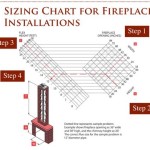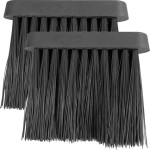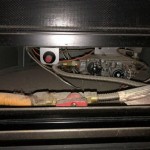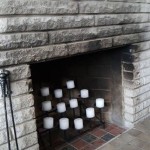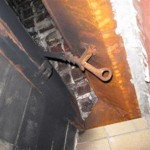Best Gas Logs for Fireplace: A Comprehensive Guide
Gas logs offer a convenient and aesthetically pleasing alternative to traditional wood-burning fireplaces. They provide the visual appeal of a real fire without the hassle of sourcing, storing, and managing wood. Furthermore, gas logs eliminate the smoke, ash, and creosote buildup associated with wood fires, contributing to a cleaner and safer home environment. Selecting the best gas logs for a fireplace involves considering several factors, including vent type, size, material, realism, and safety features.
This article will explore the key considerations for choosing gas logs and highlight some top options available in the market, enabling informed decisions for enhancing the fireplace experience.
Understanding Vent Types: Vented vs. Ventless
One of the most crucial decisions when selecting gas logs is determining whether to opt for vented or ventless models. These two types operate with fundamentally different principles and have distinct installation and usage requirements.
Vented gas logs are designed to be used in fireplaces with a fully functional chimney. These logs produce a realistic flame appearance, often mimicking the look of a traditional wood-burning fire. However, they are not as energy-efficient as ventless logs, as a significant portion of the heat generated escapes through the chimney. Vented logs require the fireplace damper to be fully open during operation to ensure proper ventilation and prevent the buildup of carbon monoxide. The larger flame typically produced by vented gas logs contributes significantly to their aesthetic appeal.
Ventless gas logs, conversely, do not require a functioning chimney. They are designed to burn cleanly and efficiently, with a much smaller amount of exhaust. This allows most of the heat to radiate into the room, making them a more energy-efficient option. Ventless logs are equipped with an Oxygen Depletion Sensor (ODS), which automatically shuts off the gas supply if the oxygen level in the room drops to an unsafe level. This safety feature is critical for preventing carbon monoxide poisoning. While ventless logs offer greater efficiency, the flame appearance generally lacks the realism of vented logs. Furthermore, some individuals may be sensitive to the odors produced during combustion, though modern ventless logs are designed to minimize these emissions.
The choice between vented and ventless gas logs depends on individual preferences, fireplace setup, and energy efficiency goals. If realism is paramount and a functioning chimney exists, vented logs are a suitable option. If energy efficiency and ease of installation are more important, and a chimney is absent or impractical to use, ventless logs may be the better choice.
Material and Realism: Ceramic vs. Refractory Ceramic Fiber
The material used to construct gas logs significantly impacts their appearance, durability, and heat retention properties. The two most common materials are ceramic and refractory ceramic fiber. Each material offers distinct advantages and disadvantages.
Ceramic gas logs are known for their durability and realistic appearance. They are typically heavier and more dense than refractory ceramic fiber logs. The intricate details and textures molded into ceramic logs can closely resemble real wood, enhancing the authenticity of the fireplace experience. Ceramic logs also retain heat well, radiating warmth even after the gas is turned off. However, ceramic logs tend to be more expensive than their refractory ceramic fiber counterparts.
Refractory ceramic fiber gas logs are lighter and more affordable than ceramic logs. They are made from a blend of ceramic fibers that are resistant to high temperatures. While they may not possess the same level of detail as ceramic logs, manufacturers are continually improving their designs to enhance realism. Refractory ceramic fiber logs heat up quickly and radiate heat effectively. Their lightweight nature makes them easier to handle and install. However, they may not be as durable as ceramic logs and may be more prone to damage over time.
The choice between ceramic and refractory ceramic fiber logs depends on budget, desired level of realism, and expected lifespan. If budget is less of a concern and a highly realistic appearance is desired, ceramic logs are the preferred option. If affordability and ease of handling are priorities, refractory ceramic fiber logs provide a viable alternative.
Safety Features and Installation Considerations
Safety is paramount when installing and operating gas logs. Proper installation and adherence to safety guidelines are essential to prevent carbon monoxide poisoning, gas leaks, and other potential hazards.
All gas logs, especially ventless models, should be equipped with an Oxygen Depletion Sensor (ODS). This device monitors the oxygen level in the room and automatically shuts off the gas supply if the oxygen level drops to an unsafe level. Regular inspection of the ODS is crucial to ensure its proper function.
Professional installation is highly recommended, particularly for individuals who are not experienced in gas line connections. A qualified technician can ensure that the gas logs are properly installed and connected to the gas supply, minimizing the risk of leaks. Proper ventilation is also critical, especially for vented gas logs. The chimney should be inspected regularly to ensure it is free of obstructions and functioning correctly. A carbon monoxide detector should be installed in the vicinity of the fireplace to provide an early warning in case of a buildup of this odorless and colorless gas.
Before purchasing gas logs, it is essential to measure the fireplace dimensions to ensure a proper fit. The logs should not be placed too close to the fireplace walls or ceiling, as this could create a fire hazard. The gas logs should also be compatible with the existing gas supply system. Ensure the BTU rating of the logs is appropriate for the fireplace size and gas line capacity.
Regular maintenance, including cleaning the logs and burner assembly, is necessary to ensure optimal performance and safety. Follow the manufacturer's instructions for cleaning and maintenance procedures. Avoid using harsh chemicals or abrasive cleaners, as these can damage the logs and burner components.
Choosing the best gas logs for a fireplace involves careful consideration of several factors, including vent type, material, realism, and safety features. By understanding these considerations and following proper installation and maintenance procedures, one can enjoy the warmth and ambiance of a gas fireplace safely and efficiently.

The Best Gas Log Sets For 2024 Fireplaces Direct Learning Center

Top 6 Vented Gas Log Sets Woodlanddirect Com

The Best Gas Log Sets For 2024 Fireplaces Direct Learning Center

Vented Gas Logs Heater Or Decorative Bart Fireside

The Best Gas Log Sets For 2024 Fireplaces Direct Learning Center

Warming Trend Update Gas Logs To Improve Performance And Appearance Walton

The Best Gas Log Sets For 2024 Fireplaces Direct Learning Center

Gas Logs In Houston Perfection Supply

Fireside Grand Oak Gas Log Set Hearth And Home Distributors Of Utah Llc

5 Reasons Why Gas Logs Are A Better Alternative To Firewood G B Energy

